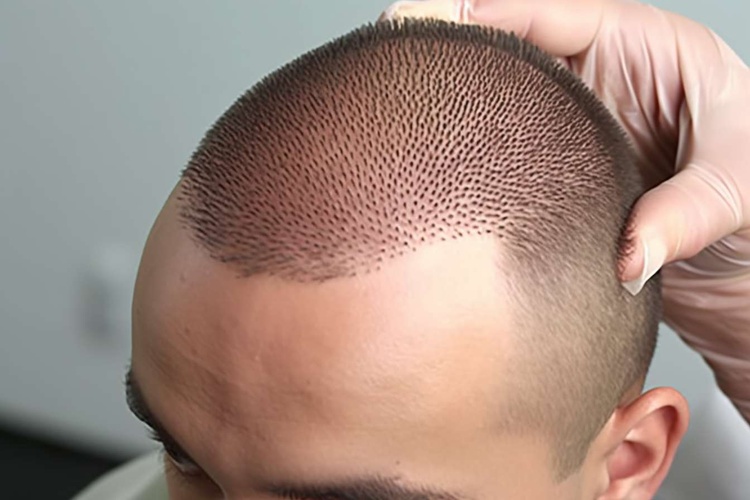Scalp Psoriasis Care: Treatments, Routines, and Relief
Scalp psoriasis creates persistent, itchy, red, and flaky patches that affect comfort and confidence. This guide covers proven medical options—from topical steroids and medicated shampoos to systemic drugs and dermatologist procedures—plus practical scalp-care routines, lifestyle changes, and clear signs for seeking professional help. Learn how to work with clinicians to reduce flare-ups and improve daily life with scalp psoriasis.

Scalp Psoriasis Care: Treatments, Routines, and Relief
A stepwise medical approach
Management of scalp psoriasis usually starts with conservative, topical strategies and escalates to more intensive therapies when needed. First-line options often include topical corticosteroid preparations in the form of solutions, foams, or lotions designed for scalp use to reduce inflammation and slow the rapid skin cell turnover that creates thick scales. Medicated shampoos that contain keratolytic or anti-inflammatory ingredients are commonly recommended to complement steroid therapy.
Vitamin D analogs, such as calcipotriene, are another mainstream choice. These agents help normalize skin cell growth and are frequently used alone or combined with topical steroids to boost effectiveness while minimizing steroid exposure. If the disease is widespread, stubborn, or significantly impacts quality of life, clinicians may consider systemic treatments. These range from traditional oral immunosuppressants to modern biologic injections that target specific immune pathways. Because systemic agents carry potential side effects and require routine monitoring, prescriptions are typically managed by dermatology specialists.
Crafting an effective scalp-care routine
A reliable, consistent scalp routine can make a substantial difference in symptom control. Choose gentle, medicated shampoos that include salicylic acid, coal tar, or other keratolytics to help loosen and remove thick plaque. When using these shampoos, follow product or clinician directions and leave the formula on the scalp for the recommended time before rinsing so the active ingredients can act.
Moisturizing the scalp helps reduce itching and cracking. Lightweight emollients or non-comedogenic oils applied sparingly to affected spots can soften scales and ease irritation. Avoid personal care products with harsh sulfates, strong fragrances, or high alcohol content, and try to limit heat styling, which can further dry the skin. When applying prescription topical medications—whether solutions, foams, or creams—adhere closely to the frequency and duration your provider prescribes. A combined regimen using a steroid together with a vitamin D analog is a common strategy to improve control while lowering cumulative steroid exposure.
Dermatologist-delivered procedures
When topical care and medicated shampoos are insufficient, dermatologists can offer clinic-based procedures to treat plaques more directly and intensively.
| Treatment Type | What it does | Typical course |
|---|---|---|
| Phototherapy | Controlled ultraviolet light reduces inflammation and slows cell growth across broad areas | 2–3 sessions per week for several weeks |
| Excimer laser | Focused UVB energy targeted to specific stubborn patches | Often 10–12 sessions depending on response |
| Steroid injections | Direct corticosteroid administered into thick plaques to rapidly reduce swelling | Given by a clinician as needed |
| Systemic medications | Oral or injectable immune-modulating drugs for moderate-to-severe disease | Ongoing therapy with regular monitoring |
Prices, rates, or cost estimates mentioned in this article are based on the latest available information but may change over time. Independent research is advised before making financial decisions.
Each procedural option has advantages and limitations. Phototherapy can be very effective when large areas of the scalp are involved but requires multiple visits. The excimer laser gives precise UVB treatment to limited, resistant patches and may need fewer sessions. Intralesional steroid injections often yield quick improvement for very thick plaques but should be used sparingly because of the risk of local skin thinning. Systemic treatments, including newer biologics, are reserved for severe or treatment-resistant cases and have transformed outcomes for many patients, offering sustained relief for some.
Lifestyle measures and trigger management
Medical care works best when paired with lifestyle changes that reduce flare frequency and severity. Psychological stress is a frequent trigger for psoriasis flares; techniques such as mindfulness meditation, yoga, cognitive-behavioral therapy, or simple relaxation routines can be helpful. Diet may influence systemic inflammation for some people—emphasizing whole foods, plenty of vegetables, omega-3-rich fish, and limiting highly processed foods can be beneficial, although effects vary.
Regular physical activity and consistent, restorative sleep support overall immune function and may help improve psoriasis control. Identify and try to avoid individual triggers when possible: common culprits include certain medications, excessive alcohol, smoking, cold dry weather, and skin trauma (the Koebner phenomenon).
When to see a healthcare professional
Mild cases of scalp psoriasis are often manageable with over-the-counter medicated shampoos and emollients. However, seek medical advice if symptoms persist or worsen despite home care, if itching or pain is severe, if you notice significant hair loss, or if the condition negatively affects work, social activities, or emotional well-being.
A dermatologist can confirm the diagnosis, exclude other scalp conditions such as seborrheic dermatitis or fungal infections, prescribe stronger therapies, and advise on procedural or systemic options. For systemic drugs or biologics, a specialist will arrange baseline laboratory testing and ongoing monitoring to track safety and effectiveness.
Key takeaways
Effective management of scalp psoriasis typically blends targeted medical treatments, a gentle but consistent scalp-care routine, and lifestyle adjustments that help reduce triggers. Because individual responses to therapy differ, partnering with a dermatologist allows you to tailor treatments that balance benefit and safety. With the right combination of approaches, many people can achieve meaningful symptom control and improved quality of life.
This article is for informational purposes only and should not be considered medical advice. Please consult a qualified healthcare professional for personalized guidance and treatment.






